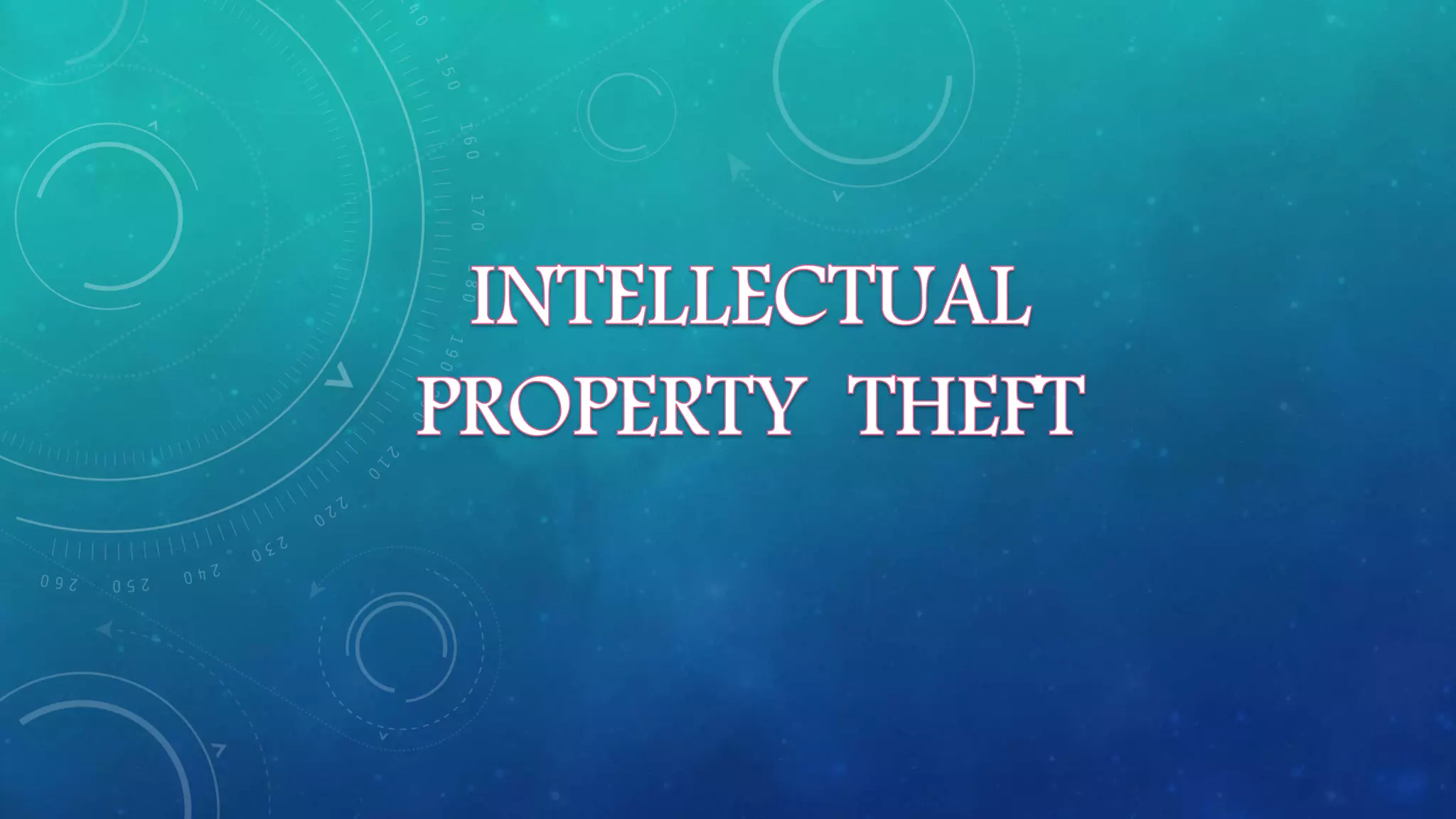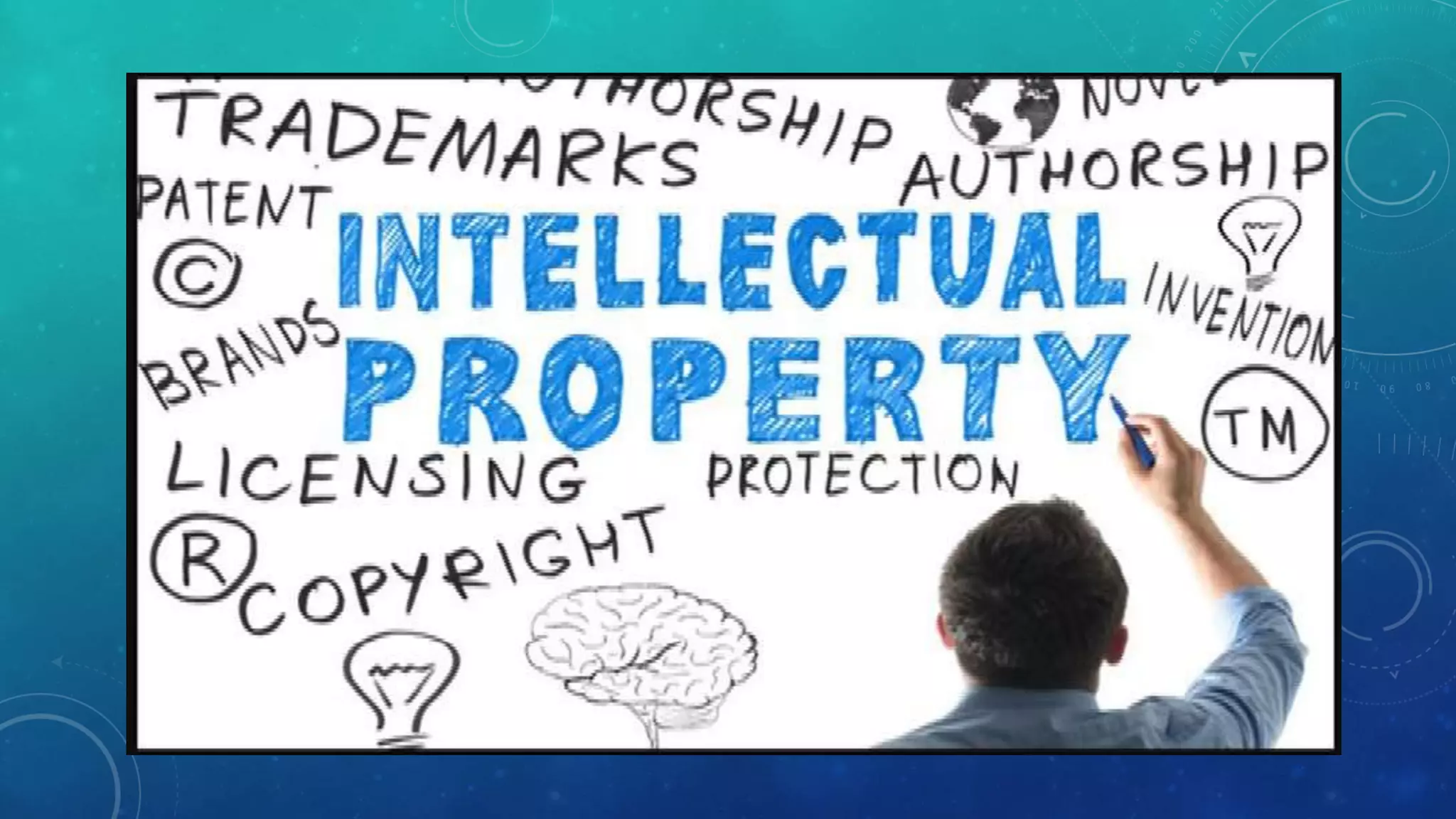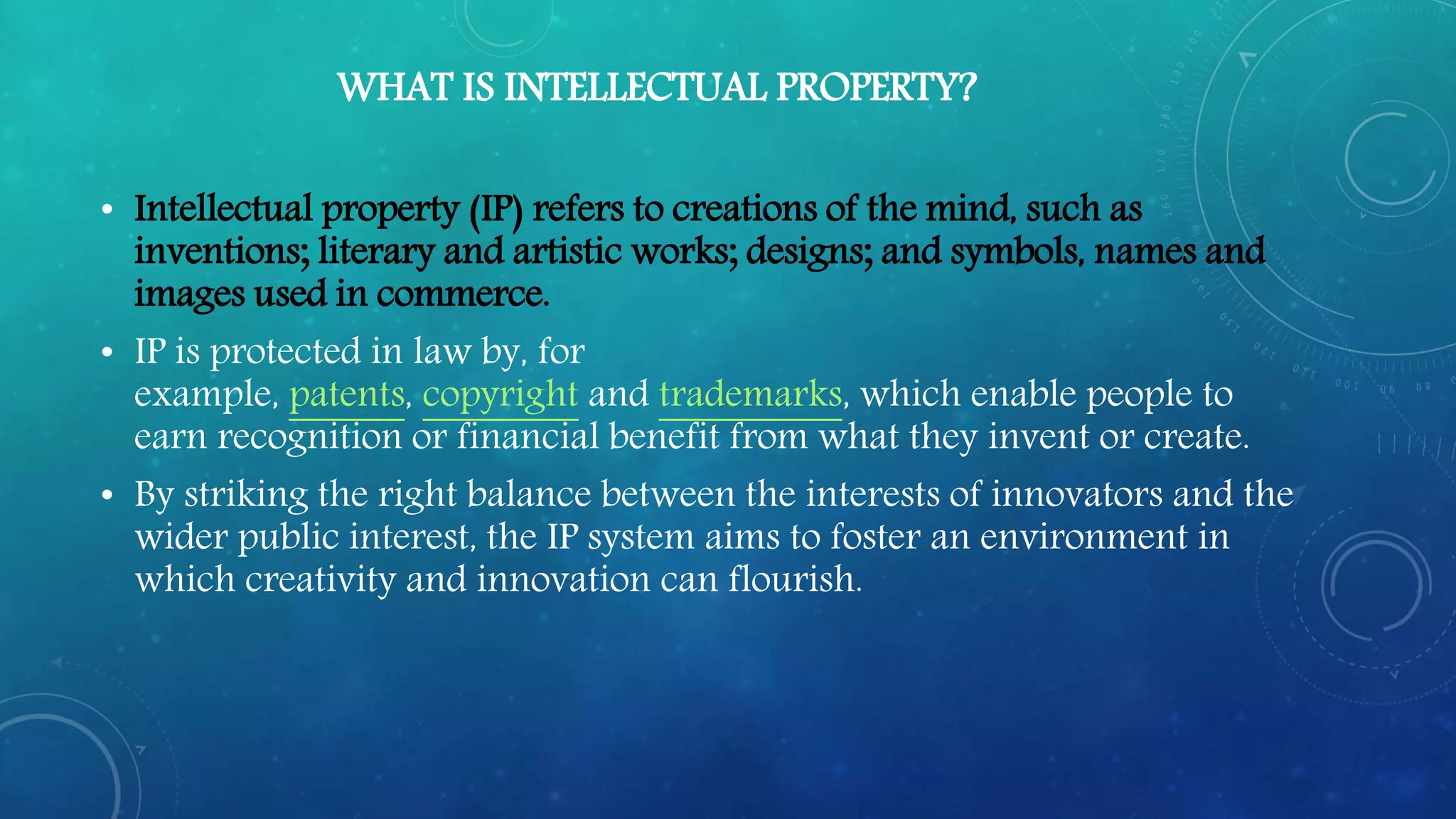Intellectual property refers to creations of the mind such as inventions, artistic works, designs, and symbols. IP is protected by laws through mechanisms like patents, copyrights, and trademarks. These laws aim to balance innovation and public access by granting exclusive rights to creators for a period. Examples of intellectual property include business logos, artistic works, patents on inventions, and more. IP is an important intangible asset and its theft or violation can damage businesses, so strong protections are needed.


























